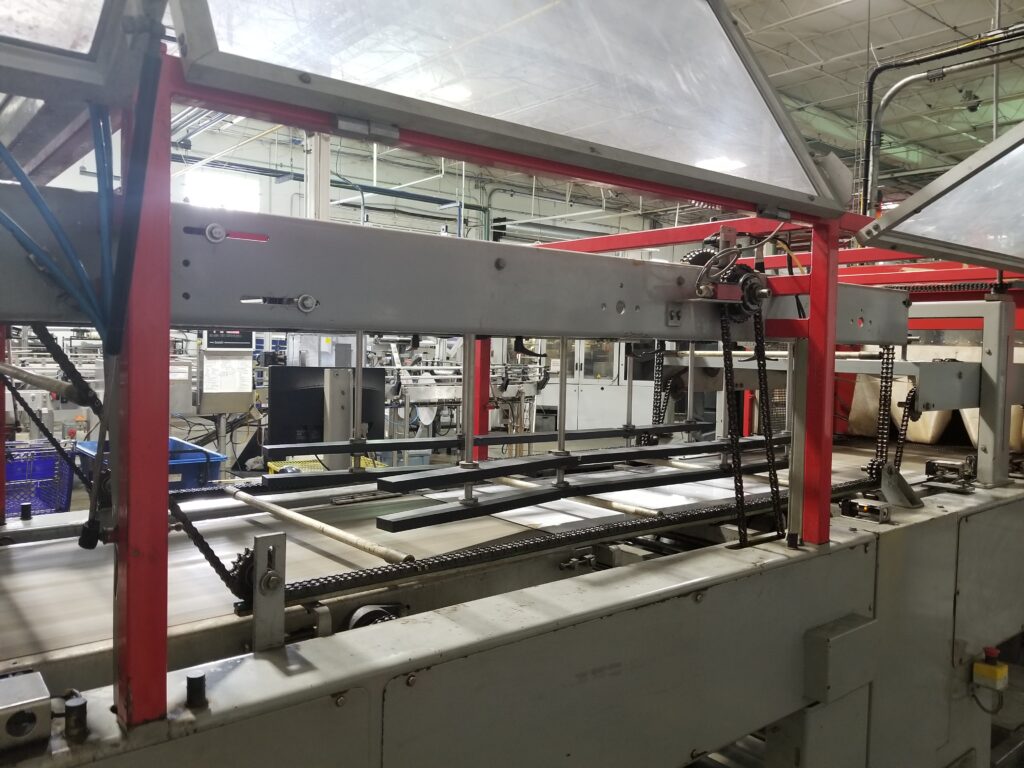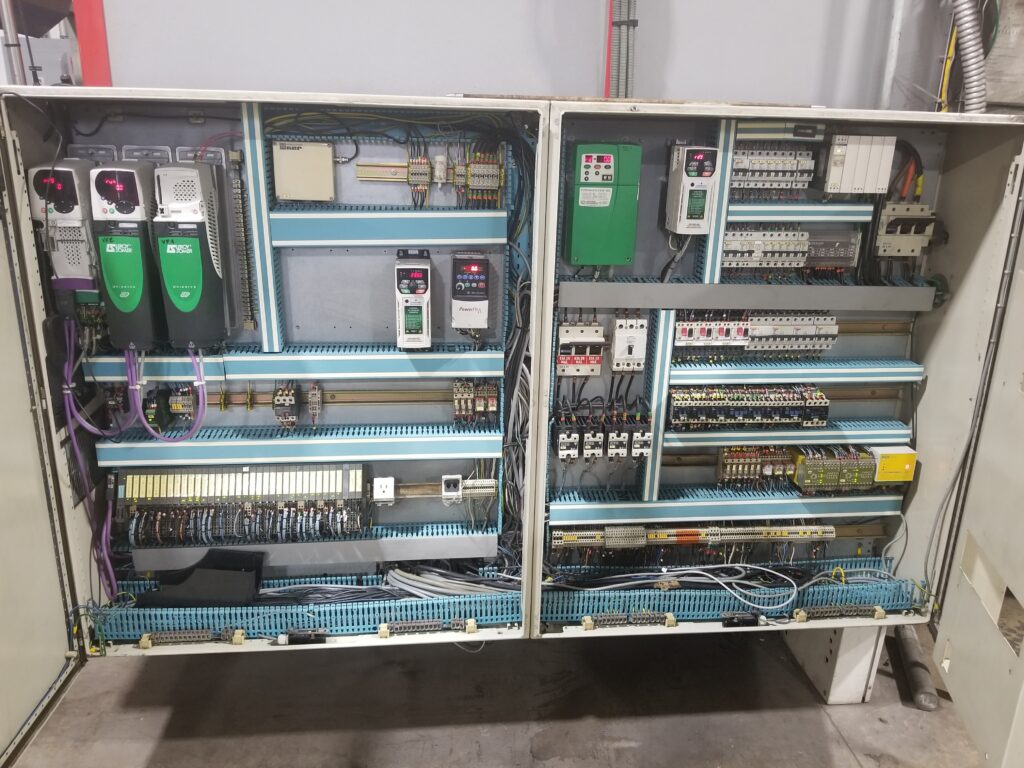The Complexities of Systems Integration

Have you ever wondered why some seemingly simple systems integration jobs take so much time and money to complete?
The picture above shows a section of a film wrapper build by a French company, Cermex. I would estimate that this machine was originally designed in the 1980s, this version is from some time in the 1990s.
It is controlled by a combination of a computer running proprietary software connected by Profibus to Siemens I/O and Servo/Motor Controllers from a company called Leroy Somers. The Somers drives are now apparently owned by Control Techniques, a company whose products I have dealt with before.
First, why does my customer want to change the controls for this machine? The software in this system can not be modified by the user. It is compiled software in the computer and Cermex does not provide the code, so it would have to be replaced with a different platform. Also the Leroy Somers Unidrives contain quite a bit of code themselves, coordinating motion between all of the servo mechanisms and even the VFDs, which control the film feed and conveyors. There are about 35-40 different parameters that customers can enter into the system to adjust operation of the machine for different products.
If the customer wants the system to do anything outside of what the vendor provides, technicians/programmers need to travel from France to change the code. If a part breaks, documentation is mostly in French, drawings are not very good, and clearly the vendor has not provided information such that parts can be provided from outside sources.
When I started on this project last year we built a control system with a Siemens PLC and a Weinview HMI that replaced the computer part of the system. We spent several weeks interfacing with the Leroy Somers Unidrives and got the system running fairly well. Unfortunately we were still at the mercy of the code in the drives, and the format of the “recipes” that control all of the peripheral equipment.
I traveled back down to Miami three weeks ago to work on the system, and while there we decided we would like to replace the Unidrives also, giving us total control of all parts of the machine. We decided to use an Allen-Bradley ControlLogix with a Prosoft card that talks to the I/O.

The three drives in the upper left are the Unidrives. They talk to each other over Profibus, and also control four of the other variable frequency drives (VFDs) in the panel. The long object in the lower left is all of the Siemens Profibus I/O, which is controlled by the code in the computer.
The drives are being replaced with Allen-Bradley Kinetix 300 Servo drives and a PowerFlex 40. It turns out that the Unidrives can control both servos and standard AC motors, the main line drive motor has an encoder on the back end of it but runs at a constant speed. So a High Speed Counter (HSC) card in the ControlLogix PLC rack will handle the input from the encoder, which the other two servo drives will reference.
Essentially this is like building a new machine, since we are replacing all of the controlling components. Since we don’t have access to the original code, there has been a lot of discovery and analysis of the running machine to determine what the machine already does, and then talk about what we’d like it to do.
It took almost a full day to configure the Profibus connections through the Prosoft card. I also had to replace all of the HMI tags that were configured for Siemens addresses with Allen-Bradley tags. Siemens S7-300’s are byte based, while Allen-Bradley ControlLogix uses tags, so this takes a while. Much of the data also had to be converted in the PLC code.
The most difficult aspect of this project is that ABD needs to continue production and the machine can’t be down for long. The new PLC and drives will be mounted in a separate panel and everything will be tested independently of the machine before replacing the motors. Also my schedule makes it tough, I have a lot of classes already scheduled and will need to do much of the work remotely before returning to Miami in May.
As many of you might know, I spend most of my time teaching PLC and HMI programming now, but this particular customer is my way of staying involved with technology and keeping my skills sharp. I have written several other posts on projects for ABD, from the Syrup room to other aspects of the plant. I still like playing with The Big Toys, and this qualifies as yet another!
But yes, systems integration is time consuming and expensive, but sometimes very productive. Without an excellent relationship with this customer, it would be much more painful for me, and much more expensive for them.
